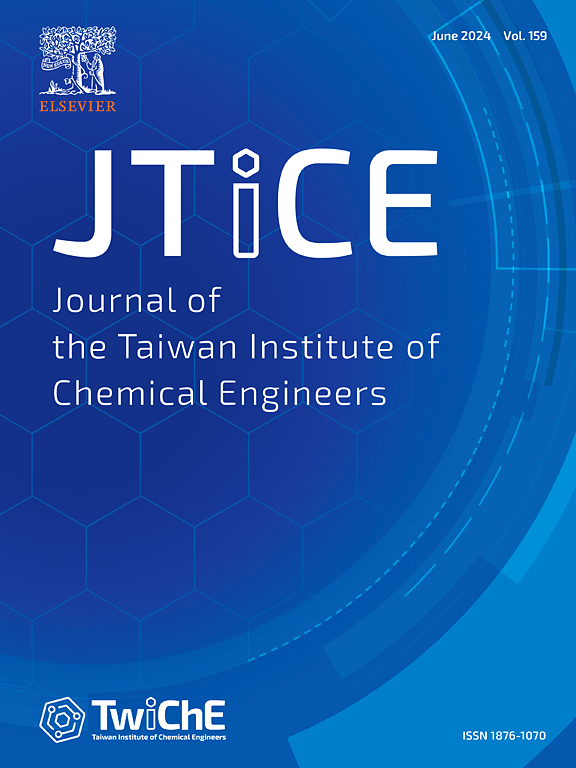有机肥对从食物垃圾中高效生产可再生能源的影响分析
IF 5.5
3区 工程技术
Q1 ENGINEERING, CHEMICAL
Journal of the Taiwan Institute of Chemical Engineers
Pub Date : 2025-06-26
DOI:10.1016/j.jtice.2025.106242
引用次数: 0
摘要
背景由于消费者对清洁能源的需求不断增加,人们正在采用不同的想法和方法来增加可再生能源的发电。当前的能源危机凸显了全球能源供应的差异,也凸显了扩大可再生能源、提高能源效率和发展基础设施以支持普遍能源获取的必要性。本研究的目的是确定大学环境中食物垃圾产生甲烷气体和随后发电的潜力。方法:该实施方案包括一个小型沼气厂,利用食物垃圾在一个5立方米的大学规模厌氧沼气池中进行12个月的高发电量,以在中温(35±1°C)和嗜热(55±1°C)条件下转化每日负载的混合食物垃圾和牛粪。测试了四种不同的饲料比例。同质混合垃圾(667公斤食物垃圾和337公斤牛粪)产生最多的甲烷(180立方米/天)和电力(600千瓦/天)。一项为期12个月的技术经济分析得出的平准化能源成本(LCOE)为0.19千瓦时毒血症。这些发现为可扩展的校园沼气能源系统定义了最佳运行参数。这种新颖的、工厂规模的实施为高性能校园沼气系统定义了清晰、可扩展的参数。本文章由计算机程序翻译,如有差异,请以英文原文为准。
Analysis of the impact of organic manure in techno-efficient production of renewable energy from food waste
Background
Owing to the increased consumer demand for clean energy, different ideas and methods are being adopted to increase the generation of energy from renewable resources. The current energy crisis highlights the global disparities in energy availability and underscores the need for expanding renewable energy sources, enhancing energy efficiency, and developing infrastructure to support universal energy access. This research is implemented with the objective to ascertain the potential of food wastes in a university environment to produce methane gas and subsequent electricity generation.
Methods
This implementation includes a mini biogas plant that uses food waste for high production of electricity with a 5 m³ university‑scale anaerobic digester over 12 months to convert daily loads of mixed food waste and cow dung under mesophilic (35 ± 1 °C) and thermophilic (55 ± 1 °C) conditions. Four different feed ratios have been tested.
Significant findings
The homogeneous mixed waste (667 kg food waste and 337 kg cow dung) produced the highest amount of methane (180 m³/day) and electricity (600 kW/day). A 12‑month techno‑economic analysis yielded Levelized Cost of Energy (LCOE) of €0.19 kWh⁻¹. These findings define optimal operating parameters for scalable, campus‑based biogas energy systems. This novel, plant‑scale implementation defines clear, scalable parameters for high‑performance campus biogas systems.
求助全文
通过发布文献求助,成功后即可免费获取论文全文。
去求助
来源期刊
CiteScore
9.10
自引率
14.00%
发文量
362
审稿时长
35 days
期刊介绍:
Journal of the Taiwan Institute of Chemical Engineers (formerly known as Journal of the Chinese Institute of Chemical Engineers) publishes original works, from fundamental principles to practical applications, in the broad field of chemical engineering with special focus on three aspects: Chemical and Biomolecular Science and Technology, Energy and Environmental Science and Technology, and Materials Science and Technology. Authors should choose for their manuscript an appropriate aspect section and a few related classifications when submitting to the journal online.

 求助内容:
求助内容: 应助结果提醒方式:
应助结果提醒方式:


